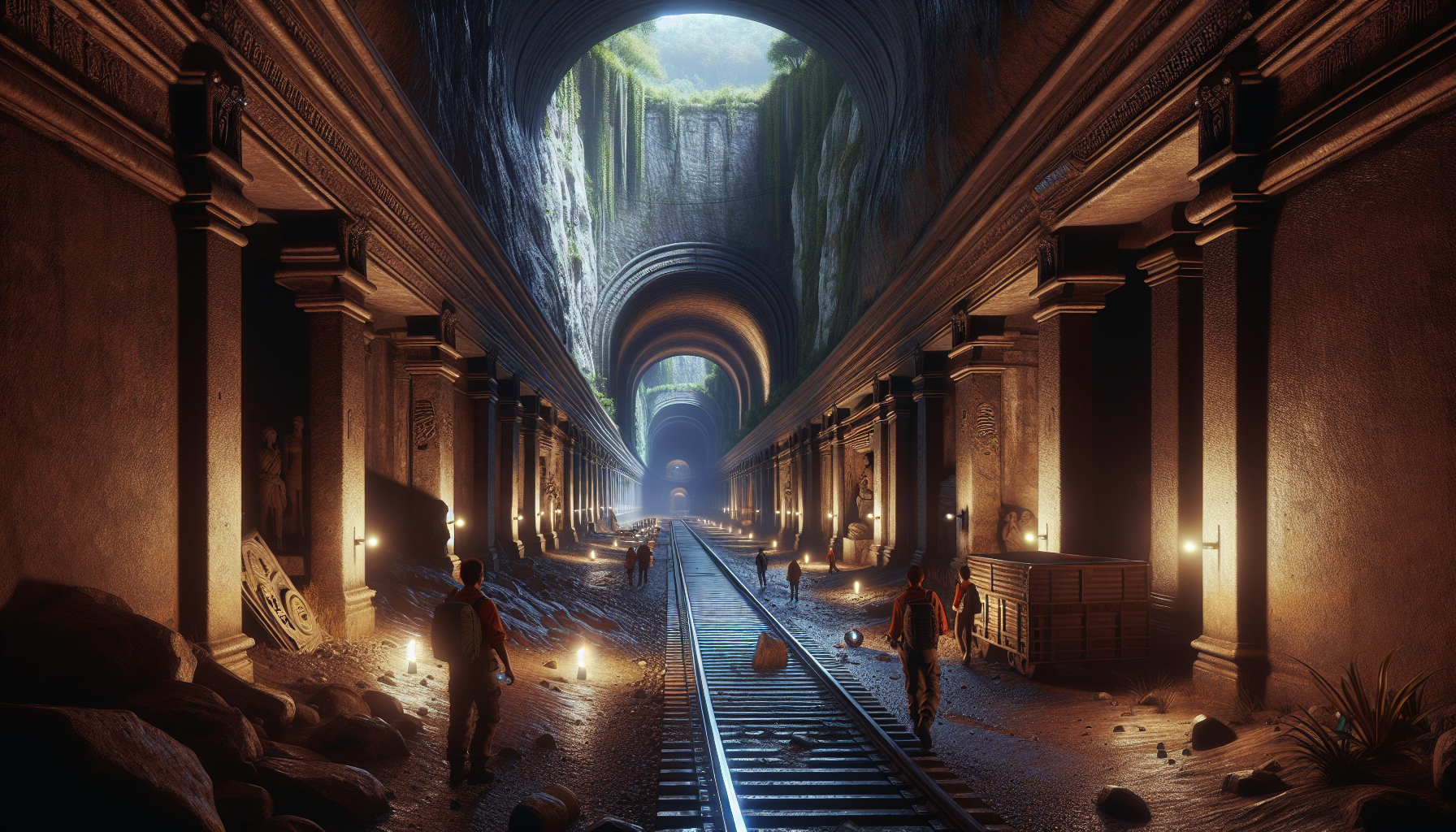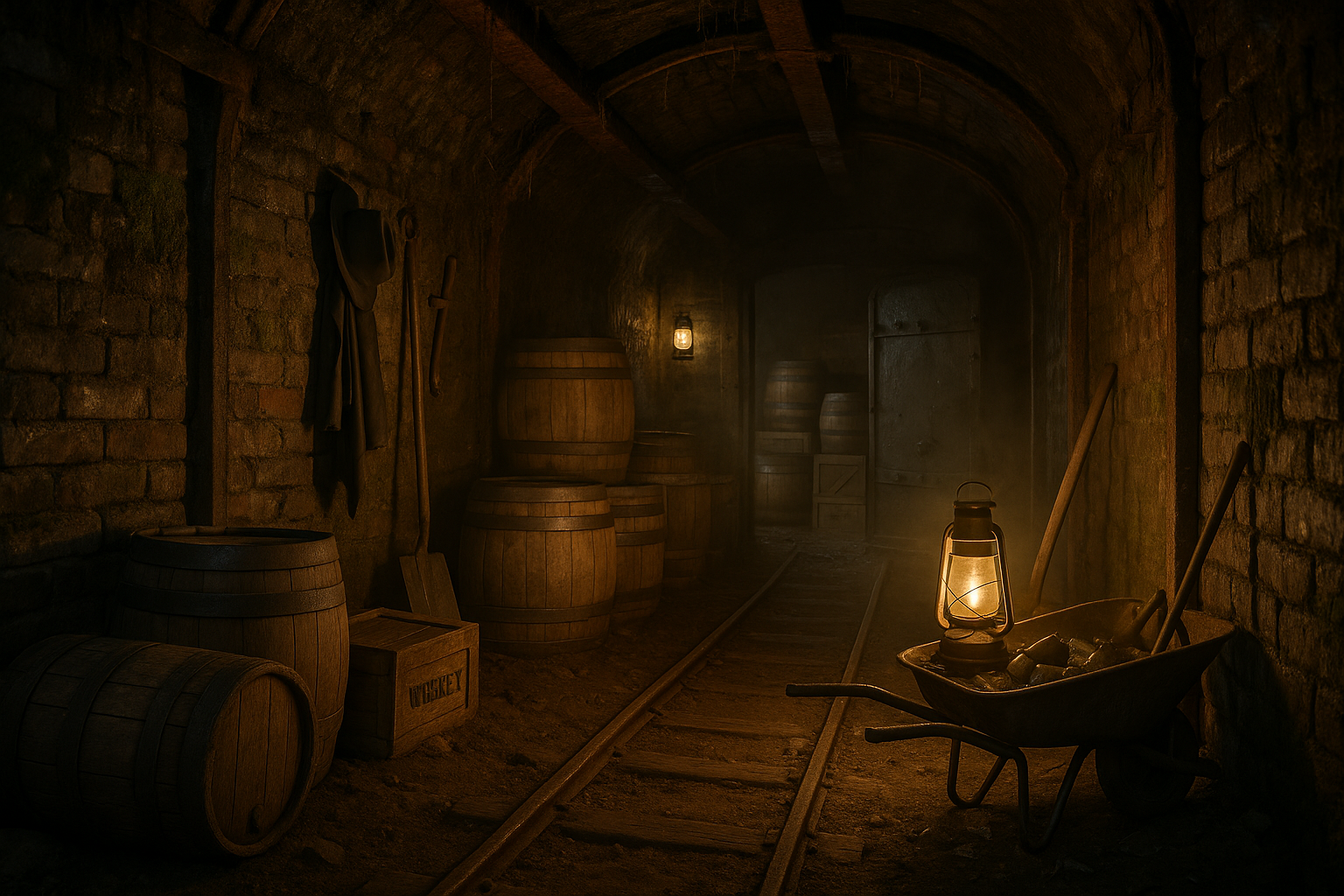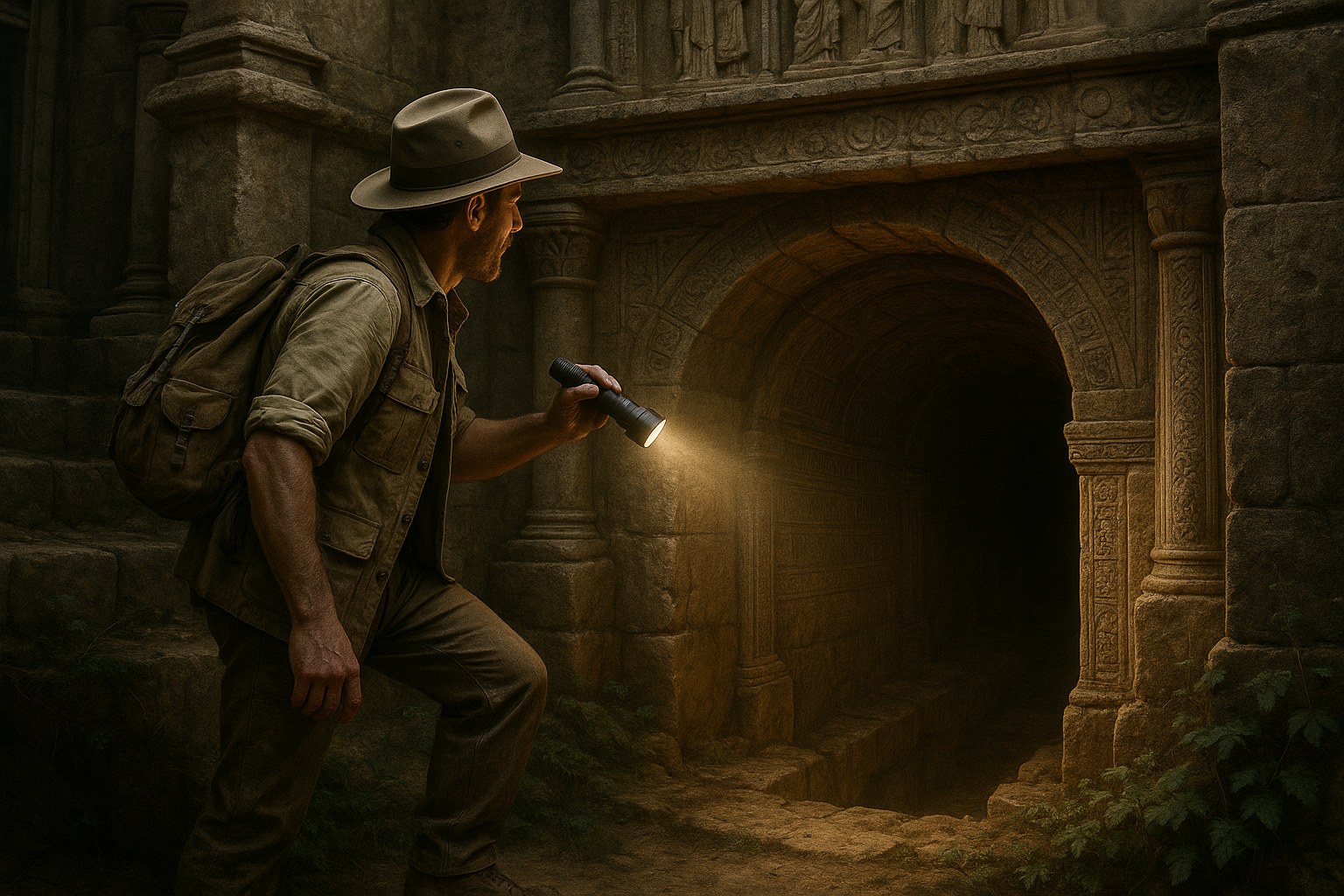In a world where the hustle and bustle of city life often dominates our senses, it’s easy to forget that beneath our feet lies a realm just as vibrant and complex as the urban landscapes above. The fascination with what lies underground has captivated human curiosity for centuries, sparking tales of hidden treasures, secret societies, and entire worlds existing below the surface. This article delves into the mesmerizing world of subterranean cities, where history, architecture, and human ingenuity converge to create hidden wonders that challenge our understanding of urban life. From ancient catacombs to modern marvels, these underground cities offer a glimpse into the past while shaping the future in unexpected ways.
The allure of subterranean cities is not just a modern fascination; it has roots that stretch back to ancient civilizations. For millennia, societies have utilized underground spaces for various purposes—shelter from invaders, storage for precious goods, and even as sacred burial sites. The ancient city of Derinkuyu in Turkey, for instance, serves as a testament to human resourcefulness. This sprawling underground metropolis, capable of housing thousands, was carved directly into the rock and offered its inhabitants protection from the dangers above. As we journey through these underground passages, we uncover the stories of the people who lived and thrived in these hidden cities, adapting to the challenges of their environment with remarkable ingenuity.
As we transition from historical marvels to modern-day wonders, the narrative shifts to how contemporary cities are embracing their subterranean spaces. Urban planners and architects are increasingly looking below ground for innovative solutions to the challenges of urbanization. From the extensive underground networks of Montreal’s RESO to the ambitious plans for subterranean parks in New York City, these projects highlight the potential of underground spaces to enhance urban living. By reimagining the possibilities beneath our feet, cities can alleviate surface congestion, create new public spaces, and even foster a more sustainable future. These developments not only redefine what a city can be but also invite us to reconsider how we interact with our urban environments.
In this exploration of underground cities, we will delve into the technological advancements that make these hidden worlds possible, examine the cultural and historical significance of these spaces, and consider the environmental implications of building below ground. We’ll also explore the psychological impact of living and working in subterranean environments, pondering how these spaces influence our perceptions and experiences. So, join us as we unearth the wonders of cities below ground, where every tunnel and chamber holds a story waiting to be told. This journey promises to illuminate the unseen, challenge our perceptions, and inspire us to imagine the potential of the world beneath our feet. 🌍🕳️
The Enigmatic Allure of Underground Cities
Underground cities have always captivated the human imagination, often depicted as mysterious realms hidden beneath the Earth’s surface. These subterranean wonders are not mere figments of fiction; they exist in various forms across the globe. From ancient catacombs to modern-day commercial hubs, underground cities serve myriad purposes, reflecting both the ingenuity and adaptability of human civilization.
The development of underground cities can be traced back to ancient times. Historical records indicate that the earliest subterranean dwellings were primarily used for protection against invaders or harsh weather conditions. For example, the Cappadocia region in Turkey is renowned for its extensive network of underground cities, some of which date back to the 8th century BCE. These ancient cities, carved out of soft volcanic rock, provided refuge for thousands of people during times of war and religious persecution.
Fast forward to contemporary times, and the concept of underground living has evolved significantly. Modern underground cities are often designed with sustainability and efficiency in mind, offering solutions to urban challenges such as overpopulation, traffic congestion, and climate change. For instance, the RESO system in Montreal, Canada, is an expansive network of subterranean pathways connecting shopping centers, offices, and residential buildings. This underground city not only reduces the need for above-ground infrastructure but also provides a comfortable environment for pedestrians during harsh winter months.
Technological Marvels Beneath Our Feet
As we delve deeper into the 21st century, technology continues to play a pivotal role in the evolution of underground cities. Innovations in construction techniques and materials have made it feasible to build extensive subterranean complexes that can withstand the pressures of the earth above. The integration of smart technologies is transforming these spaces into highly efficient and interconnected environments, where lighting, temperature, and security systems are all optimized for human comfort.
One notable example of technological advancement in underground construction is the use of Tunnel Boring Machines (TBMs). These colossal machines can efficiently excavate tunnels of various sizes and depths, making them indispensable in the creation of modern underground cities. TBMs are designed to minimize disruption to the surface above, ensuring that urban life continues uninterrupted as the subterranean expansion takes place below.
Moreover, the incorporation of green technologies into underground cities is a growing trend. From energy-efficient lighting systems to advanced ventilation techniques, modern subterranean spaces are designed with sustainability at the forefront. For instance, the use of geothermal energy in underground cities is becoming increasingly common, providing a renewable and eco-friendly power source for heating and cooling purposes. To gain a better understanding of these technological marvels, we invite you to watch this insightful video: Subterranean Cities: Building Beneath the Earth – National Geographic.
The Cultural and Social Dynamics of Subterranean Living
The development of underground cities is not merely an engineering feat; it also brings about significant cultural and social implications. Living or working in an underground environment presents unique challenges and opportunities that can influence community dynamics, social interactions, and even psychological well-being. Understanding these aspects is crucial to designing underground spaces that are not only functional but also conducive to a high quality of life.
One of the primary social considerations in underground city planning is the creation of spaces that promote social interaction and community engagement. In many modern underground cities, developers strive to incorporate public areas such as parks, plazas, and cultural centers. These communal spaces serve as vital hubs for socialization, helping to foster a sense of community among residents and workers who spend much of their time below ground.
Additionally, the psychological effects of living or working in an underground environment must be carefully addressed. Factors such as lighting, spatial design, and access to natural elements like plants and water features can significantly impact the mental health and well-being of individuals in these spaces. Innovative design solutions, such as the use of artificial skylights and biophilic elements, are being employed to create environments that are both aesthetically pleasing and psychologically beneficial.
Comparison of Underground City Features
| Feature | Ancient Underground Cities | Modern Underground Cities |
|---|---|---|
| Purpose | Protection, refuge | Urban living, sustainability |
| Construction Material | Natural rock, stone | Concrete, steel, advanced composites |
| Technology | Manual excavation | Tunnel Boring Machines, smart systems |
| Environmental Design | Basic ventilation | Energy-efficient, green technologies |
For those curious about the intricacies of underground living, the video “The Underground City: A New Frontier of Urbanization” by the Discovery Channel offers a captivating exploration of these subterranean spaces and their potential to reshape urban life.
Challenges and Future Prospects of Subterranean Urbanization
While the allure of underground cities is undeniable, the development and maintenance of these spaces come with their own set of challenges. One of the most significant obstacles is the high cost associated with subterranean construction. Building below ground requires specialized equipment and expertise, making it a costly endeavor compared to traditional above-ground developments. As a result, the economic feasibility of underground cities often hinges on government support, public-private partnerships, and innovative financing models.
Another challenge lies in the regulatory and legal frameworks governing underground spaces. As these environments become more prevalent, there is a growing need for comprehensive policies and regulations that address issues such as property rights, safety standards, and environmental impact. Policymakers and urban planners must work together to create guidelines that facilitate the responsible and sustainable development of underground cities.
Despite these challenges, the future of subterranean urbanization holds immense potential. As technology continues to advance and urban populations grow, underground cities offer a viable solution to many of the pressing issues faced by modern metropolises. From reducing urban sprawl to mitigating the effects of climate change, these subterranean wonders have the potential to redefine the way we live and interact with our urban environments.
- Explore the historical significance of ancient underground cities.
- Understand the technological advancements enabling modern subterranean construction.
- Recognize the cultural and social dynamics of living below ground.
- Assess the challenges and future prospects of underground urbanization.

Conclusion
As we draw the curtains on our exploration of the subterranean wonders, it becomes evident that the world beneath our feet is as fascinating as the one above. This article journeyed through the multifaceted universe of underground cities, unearthing the historical, architectural, and cultural significance of these hidden realms. From the ancient depths of Derinkuyu in Turkey to the bustling modern subways of Montreal, our subterranean exploration showcases humanity’s ingenuity and adaptability.
A Historical Tapestry Woven Underground
The ancient underground city of Derinkuyu, with its labyrinthine tunnels and intricate rooms, exemplifies the early human drive to seek refuge and sustainability in challenging environments. These underground sanctuaries served as havens during times of conflict and climate adversity, illustrating the primal human instinct for survival and community. The sophisticated ventilation systems and water supply channels found in these ancient cities highlight a remarkable understanding of engineering and resource management, underscoring the innovative spirit of our ancestors.
Modern Marvels of Urban Planning
Fast-forwarding to the contemporary era, cities like Montreal and Helsinki have embraced the underground for urban expansion, showcasing a seamless blend of functionality and modernity. Montreal’s Underground City, or RÉSO, extends over 33 kilometers, linking shopping centers, hotels, and metro stations, making it a vital lifeline during the harsh Canadian winters. Helsinki’s Underground Master Plan demonstrates a forward-thinking approach to urban planning, maximizing space while mitigating environmental impact. These modern subterranean developments are testaments to how underground spaces can enhance urban life, improve connectivity, and offer sustainable solutions to overcrowding and extreme weather conditions.
Cultural and Social Dynamics Below the Surface
Cultural richness thrives underground, where cities host festivals, art installations, and even entire communities. The allure of subterranean exploration often inspires creative expressions, fostering a sense of mystery and intrigue. Cities like New York and London have transformed unused tunnels and bunkers into vibrant cultural spaces, where art meets history, and the past intertwines with the present. These initiatives not only preserve historical narratives but also provide platforms for contemporary artistic expression.
Technological Innovations and Future Prospects
The advancement of technology plays a pivotal role in the exploration and development of underground spaces. From state-of-the-art tunneling machines to cutting-edge geospatial mapping technologies, our ability to delve deeper and construct efficiently has been significantly enhanced. These technological strides promise exciting prospects for future subterranean projects, potentially revolutionizing urban living, transportation, and resource management.
The Importance of Sustainable Development
As we continue to explore and expand underground, it is imperative to prioritize sustainability. Respect for the environment and cultural heritage must guide our subterranean endeavors. By learning from the past and integrating modern technology, we can create underground spaces that are not only functional and aesthetically pleasing but also environmentally friendly and culturally respectful.
Call to Action
The world below ground offers a treasure trove of knowledge, innovation, and cultural heritage. It beckons us to delve deeper, to understand its complexities and appreciate its contributions to human civilization. I encourage you, dear reader, to reflect on the insights gained from this exploration and consider how the lessons of subterranean spaces might apply to broader societal contexts. Share these revelations with your community, spark discussions on the potential of underground spaces, and advocate for sustainable development practices that honor both the earth and human ingenuity.
In conclusion, uncovering the wonders of underground cities not only broadens our understanding of human resilience and creativity but also challenges us to envision a future where urban expansion and environmental stewardship go hand in hand. As we stand on the brink of this underground renaissance, let us embrace the possibilities that lie beneath, nurturing a world that respects both its surface and its depths. 🌍
For those eager to dive deeper into this fascinating subject, a wealth of resources is available for further exploration. Websites like National Geographic and Smithsonian Magazine offer extensive articles on the history and development of underground cities. Furthermore, platforms such as ScienceDirect provide access to research papers and studies on the technological advancements and environmental considerations involved in subterranean construction. By utilizing these resources, you can continue your journey into the captivating world of cities below ground.
Thank you for joining this exploration, and may your curiosity lead you to new discoveries, both above and below the surface.
Toni Santos is a visual storyteller and artisan whose work explores the quiet power of what lies beneath. With a deep fascination for subterranean and hidden architecture, Toni uncovers the layers, voids, and forgotten spaces that shape our built environment from the shadows.
His art is a journey through the unseen — from ancient underground chambers to sealed passageways, service tunnels, and foundations buried in time. Each creation tells a story of silence, secrecy, and structure — revealing how absence and concealment can be just as meaningful as what’s visible above ground.
Whether working through visual compositions, architectural studies, or symbolic handcrafted pieces, Toni captures the soul of hidden spaces. His work bridges art and archaeology, blending design with discovery. Trained in visual design and traditional techniques, Toni creates with intention. His pieces don’t just depict — they interpret, inviting viewers to rethink what space, memory, and architecture mean when they’re hidden from view.
As the creative force behind Vizevex, Toni shares this perspective through curated visual narratives, symbolic collections, and interpretive essays that give voice to the quiet geometries beneath our feet.
His work is a tribute to:
The mystery of spaces built to be forgotten
The symbolism embedded in foundations, voids, and passageways
The timeless connection between human intention and hidden structure
Whether you’re an artist, an urban explorer, or someone fascinated by the unseen frameworks that support our world, Toni invites you into a realm where architecture becomes myth — one corridor, one layer, one buried story at a time.





